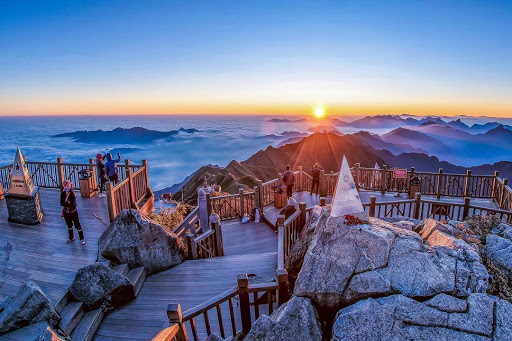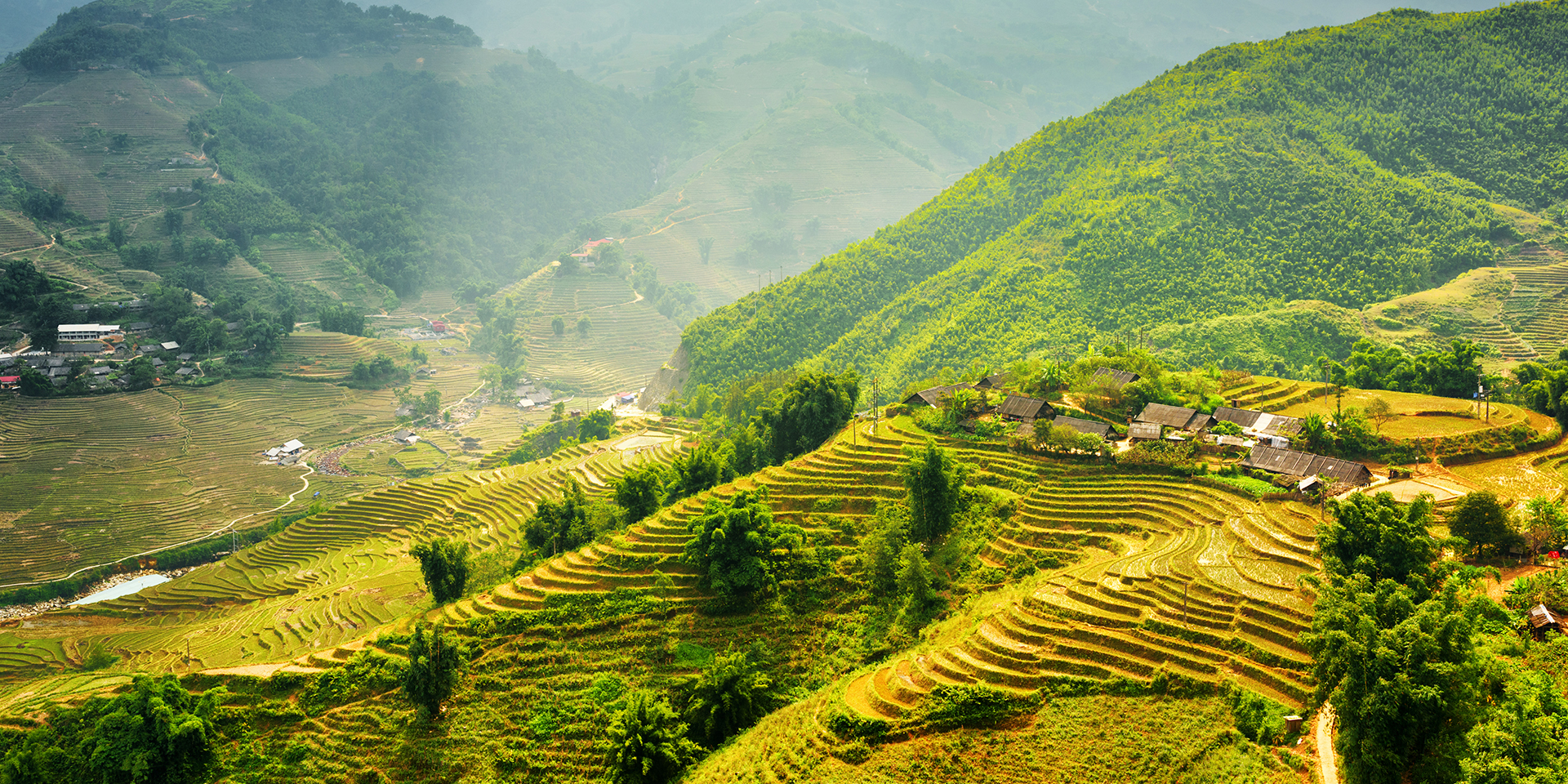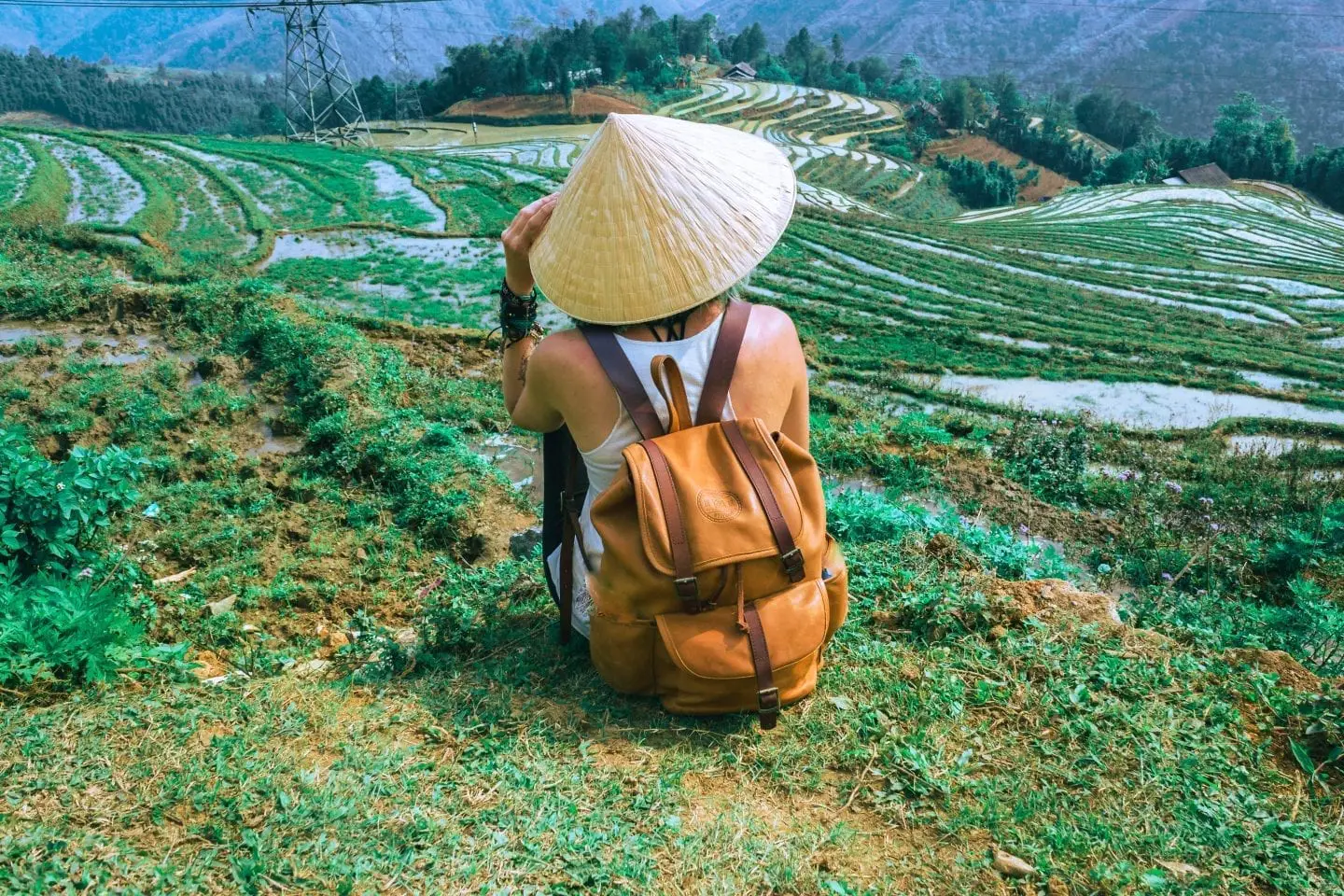Sapa, a well-known tourist spot in Vietnam situated in the mountainous region of Lao Cai Province, is a favorite among travelers due to its breathtaking views, cultural immersion opportunities, and exciting activities. Moreover, Korean tourists have recently become intrigued by Sapa. This guide offers helpful tips and specifics on organizing your journey to Sapa, including recommendations for things to do, lodging options, and essential details.
Table of Contents
What things can you do in Sapa?

Sapa offers a wide range of activities for visitors to enjoy. Here are some of the most popular things to do in Sapa:
Trekking
Trekking is one of the most popular activities in Sapa. The area is filled with beautiful rice terraces, waterfalls, and mountains that are perfect for hiking. Some of the most popular trekking routes include:
- Fansipan Mountain Trek: This is the highest peak in Indochina and offers stunning views of the surrounding area.
- Cat Cat Village Trek: This trek takes you through a traditional Hmong village and offers a glimpse into local life.
- Ta Phin Village Trek: This trek takes you through a Red Dao village and offers a chance to learn about their culture and traditions.
Homestays
Homestays in Sapa offer a great chance to immerse oneself in the local way of life. Many families provide accommodations in their homes, allowing visitors to witness their everyday routines and pastimes. Some of the popular homestay options include…
- Hill Station Lodge: This lodge offers comfortable rooms and traditional food.
- Topas Ecolodge: This lodge is located outside of Sapa and offers stunning views of the surrounding area.
- Sapa Unique Hotel: This hotel is located in the town center and offers comfortable rooms and easy access to local attractions.
Markets
Sapa has various markets where you can find diverse items such as native crafts, apparel, and cuisine. The most well-known markets are…
- Sapa Market: This market is located in the town center and offers a wide range of goods.
- Bac Ha Market: This market is located outside of Sapa and is famous for its colorful clothing and handicrafts.
- Can Cau Market: This market is also located outside of Sapa and offers a chance to see local life in action.
How to Get to Sapa

Sapa is located about 380 kilometers northwest of Hanoi. There are several ways to get to Sapa:
Train
The train is one of the most popular ways to get to Sapa. The journey takes around 8 hours from Hanoi and offers stunning views of the surrounding countryside.
Bus
The bus is another option for getting to Sapa. There are several companies that offer bus services from Hanoi to Sapa. The journey takes around 6 hours and is a more affordable option than the train.
Private Car
If you prefer a more comfortable and convenient option, you can hire a private car to take you to Sapa. This is a good option if you are traveling with a group or have a lot of luggage.
Where to Stay in Sapa

Sapa has a wide range of accommodation options, from budget guesthouses to luxury hotels. Here are some of the best places to stay in Sapa:
Victoria Sapa Resort Spa
The upscale hotel provides breathtaking vistas of the neighboring mountains and rice fields. It features a wellness center, eatery, and watering hole, along with cozy accommodations equipped with contemporary facilities.
Auberge Dang Trung Hotel
This mid-range hotel is located in the town center and offers comfortable rooms at an affordable price. It has a restaurant, bar, and rooftop terrace with beautiful views.
Sapa Hostel
This budget hostel offers dormitory-style rooms and private rooms at a low price. It has a communal kitchen and lounge area, as well as a rooftop terrace with beautiful views.
Pros and Cons of Visiting Sapa
Pros
- Beautiful landscapes: Sapa is known for its stunning rice terraces and mountain scenery.
- Diverse culture: Sapa is home to many different ethnic groups, each with their own unique traditions and customs.
- Unique experiences: Sapa offers a range of activities, from trekking to homestays, that allow visitors to experience local life firsthand.
Cons
- Crowds: Sapa can get quite busy, especially during peak travel seasons.
- Weather: The weather in Sapa can be unpredictable, with cold temperatures and rain common.
- Language barrier: English is not widely spoken in Sapa, which can make communication difficult for some visitors.
Alternatives to Sapa
If you are looking for alternative destinations to Sapa, here are some other places to consider:
- Ha Giang: This province is located north of Sapa and offers stunning mountain scenery and a chance to see local life upclose.
- Mai Chau: This valley is located southwest of Hanoi and offers a more relaxed atmosphere with beautiful scenery and local culture.
- Ninh Binh: This province is located south of Hanoi and offers stunning landscapes with karst formations, rice fields, and waterways.
Step-by-Step Guide to Planning Your Sapa Trip
Planning a trip to Sapa can be overwhelming, but with this step-by-step guide, you’ll be able to plan a memorable trip:
Step 1: Decide when to go
The best time to visit Sapa is from September to November or March to May. During these times, the weather is cool and dry, and the rice terraces are at their most beautiful.
Step 2: Book your accommodation
Once you’ve decided when to go, book your accommodation in advance. Sapa can get quite busy, so it’s best to book as early as possible.
Step 3: Choose your transportation
Decide how you want to get to Sapa – by train, bus, or private car. Make sure to book your transportation in advance.
Step 4: Plan your activities
Research the different activities available in Sapa and decide which ones you want to do. Make sure to book any tours or trekking guides in advance.
Step 5: Pack appropriately
Sapa can get quite cold, especially at night, so make sure to pack warm clothing and comfortable shoes for trekking.
Tips for Visiting Sapa
- Bring cash: Many places in Sapa do not accept credit cards, so make sure to bring enough cash.
- Dress appropriately: Sapa can get quite cold, especially at night, so make sure to dress in layers.
- Respect local customs: Sapa is home to many different ethnic groups, each with their own traditions and customs. Make sure to respect their culture and avoid any behavior that may be offensive.
- Be prepared for trekking: If you plan on trekking, make sure to bring comfortable shoes, sunscreen, and plenty of water.
The Best of Sapa
Here are some of the best things to see and do in Sapa:
Fansipan Mountain
Fansipan Mountain is the highest peak in Indochina and offers stunning views of the surrounding area. You can hike to the summit or take a cable car for an easier option.
Cat Cat Village
Cat Cat Village is a traditional Hmong village located near the town center. It offers a chance to experience local life and learn about the Hmong culture and traditions.
Bac Ha Market
Bac Ha Market is located outside of Sapa and offers a wide range of handicrafts, clothing, and food. It’s famous for its colorful clothing and lively atmosphere.
Conclusion
Sapa is a beautiful destination that offers a unique cultural experience for visitors. By following this travel guide, you’ll be able to plan a memorable trip and make the most of your time in Sapa.
FAQs
- Is English widely spoken in Sapa? English is not widely spoken in Sapa, but many hotels and restaurants have staff who speak some English.
- Can I visit Sapa year-round? While it is possible to visit Sapa year-round, the best time to visit is from September to November or March to May.
- Do I need a visa to visit Vietnam? Yes, most visitors to Vietnam need a visa. You can apply for a visa online or at a Vietnamese embassy or consulate.
- What should I pack for my trip to Sapa? Make sure to pack warm clothing, comfortable shoes for trekking, sunscreen, and plenty of water.
- How long should I stay in Sapa? We recommend staying in Sapa for at least three days to make the most of your time and experience all that Sapa has to offer.

